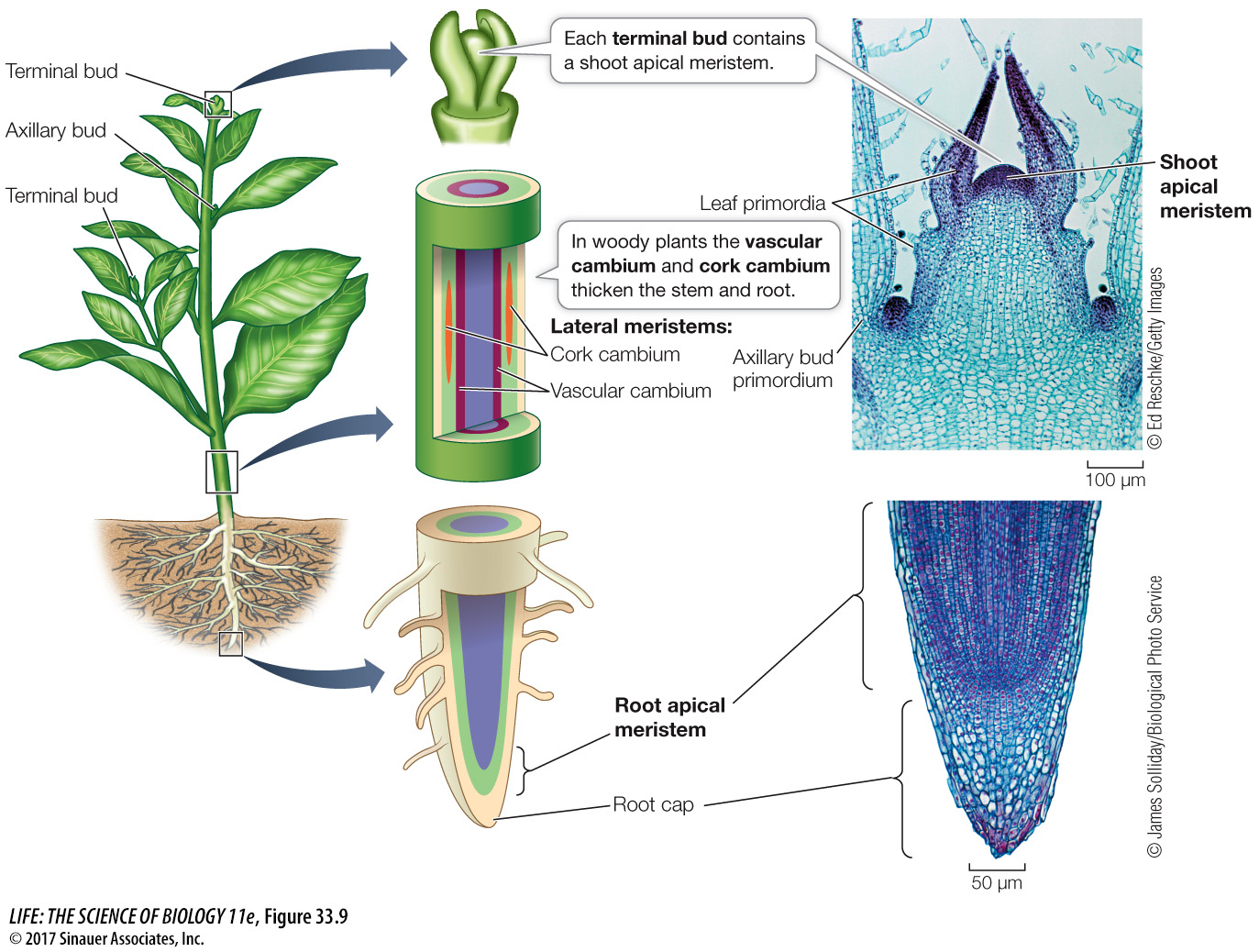Meristems generate the plant body
Meristems are localized regions of undifferentiated cells that are the sources of all new growth in the adult plant. Even before seed germination, the plant embryo has two meristems: a shoot apical meristem near the end of the embryonic shoot, and a root apical meristem at the end of the embryonic root (see Figure 33.5).
Meristematic cells are small and closely packed, with very small vacuoles and thin primary cell walls. The cells that perpetuate the meristems, called initials, are comparable to animal stem cells (discussed in Key Concept 19.1). When the initials divide, some of the daughter cells develop into new initials, and some differentiate into more specialized cells.
Several types of meristem contribute to the growth and development of the adult plant:
Apical meristems in the root and shoot (Figure 33.9) orchestrate primary growth, ultimately giving rise to every cell in the primary plant body.
When the initials of apical meristems divide, some of their daughter cells differentiate and become the primary meristems. Three kinds of primary meristem (see below) give rise to the three major tissue systems (dermal, ground, and vascular) that we described in Key Concept 33.2.
Lateral meristems (also called secondary meristems) orchestrate secondary growth (see Figure 33.9). Two lateral meristems, vascular cambium and cork cambium, contribute to the secondary plant body.

Media Clip 33.1 Rapid Growth of Brambles
www.life11e.com/